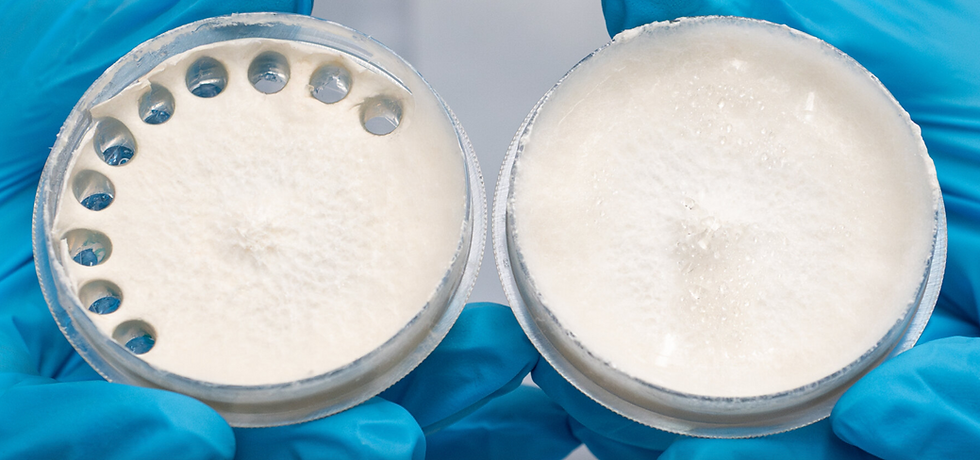Living Fungal Fibres: A Biodegradable Alternative to Plastics and Emulsifiers
- Marc Violo

- Jun 6, 2025
- 3 min read
What if the next generation of packaging, emulsifiers, and sensors wasn’t just biodegradable — but actually alive? In a the Empa lab in Switzerland, scientists have engineered a new class of biomaterials made from the mycelium of Schizophyllum commune, a common wood-degrading fungus also found in food. Their breakthrough: a plastic-like material that’s flexible, edible, and self-reinforcing — because it’s still biologically active.

The Problem with Bio-Based Plastics
Biodegradable materials are often seen as a solution to plastic pollution. But in reality, most rely on synthetic additives or harsh processing to gain strength and stability, undermining their environmental benefits. Natural materials like chitin or cellulose tend to break down easily but fall short on performance — unless they’re chemically treated.
The researchers at Empa, Switzerland’s federal institute for materials science and technology, took a different path. Rather than stripping down fungal biomass to its component fibres, they built a material around the fungus’s extracellular matrix — a living cocktail of fibres, proteins, and sugars that the fungus secretes to shape and protect itself.

The result is a new material class called Living Fibre Dispersions (LFDs): dynamic, gel-like composites that retain their structural functionality, adapt over time, and can even be eaten.
From Gel to Film: Function by Design
LFDs are produced using a specially selected strain of S. commune that naturally overproduces two key macromolecules:
Schizophyllan, a nanofibre-forming polysaccharide known for its mechanical strength and biocompatibility.
Hydrophobin, a surfactant-like protein that accumulates at the interface of water and oil — ideal for emulsification.

This combination gives LFDs their dual functionality: they can be turned into tough, tear-resistant films, or used as biologically active emulsifiers. In lab tests, emulsions made with LFDs actually became more stable over time — a reversal of how typical emulsions behave.
Because the material is still biologically active, it continues secreting these functional compounds. “It’s probably the only emulsion that gets better as it ages,” said co-author Ashutosh Sinha.
Edible, Flexible, and Self-Stabilising
The split-gill fungus is already consumed in parts of Asia. That means its use in food or cosmetic formulations carries far fewer regulatory and toxicity risks. According to the paper, this makes LFDs particularly attractive for clean-label emulsifiers in the food and personal care sectors — replacing petrochemical-derived agents like polysorbates.

But beyond emulsions, the team has demonstrated LFDs as thin structural films with impressive tensile strength. These could be used in applications like compostable bags that degrade alongside their contents — or even in the casing of biodegradable batteries or smart moisture sensors.
A Living Material — with a Future
LFDs are an example of what the authors call a “living fibre composite.” The key innovation is that material performance is not added through external processing — it’s built in biologically.
Because the fungal culture remains alive, its properties can be tuned through environmental conditions like temperature, pH, and nutrient availability. Theoretically, the same system could be engineered to secrete other functional molecules, unlocking a new generation of programmable, biofabricated materials.
This concept could redefine what we mean by sustainable materials — not just those that break down after use, but those that grow themselves, respond to their environment, and add value over time.
“We want to find applications where this interaction with the environment isn’t a limitation,” says Empa scientist Gustav Nyström, “but a feature.”




